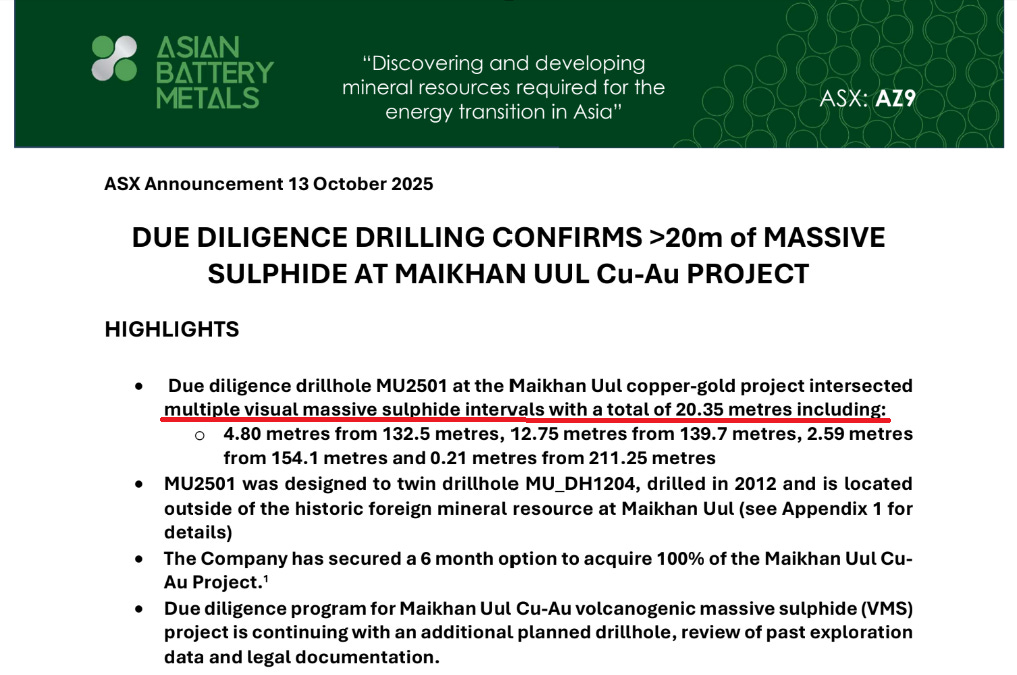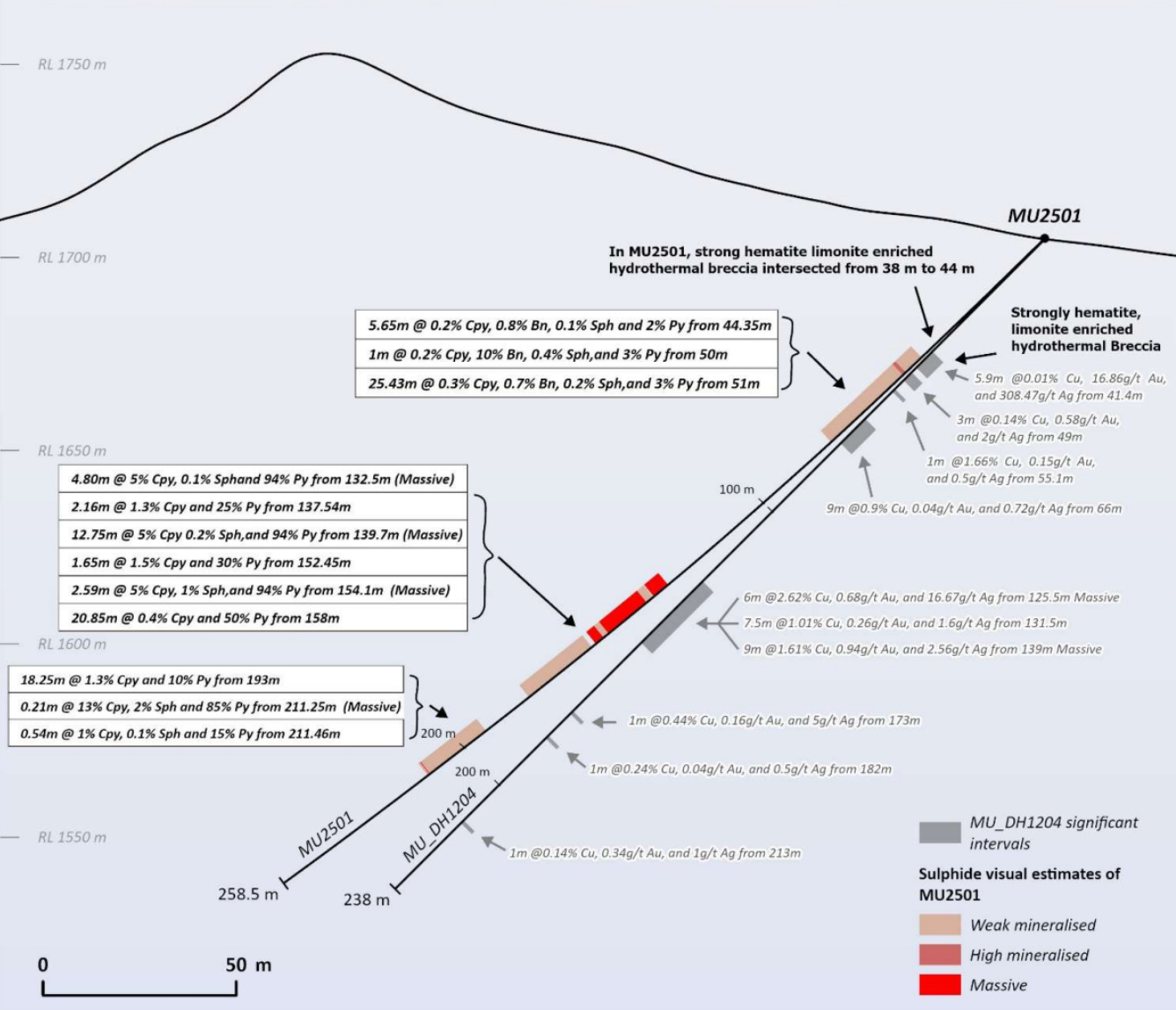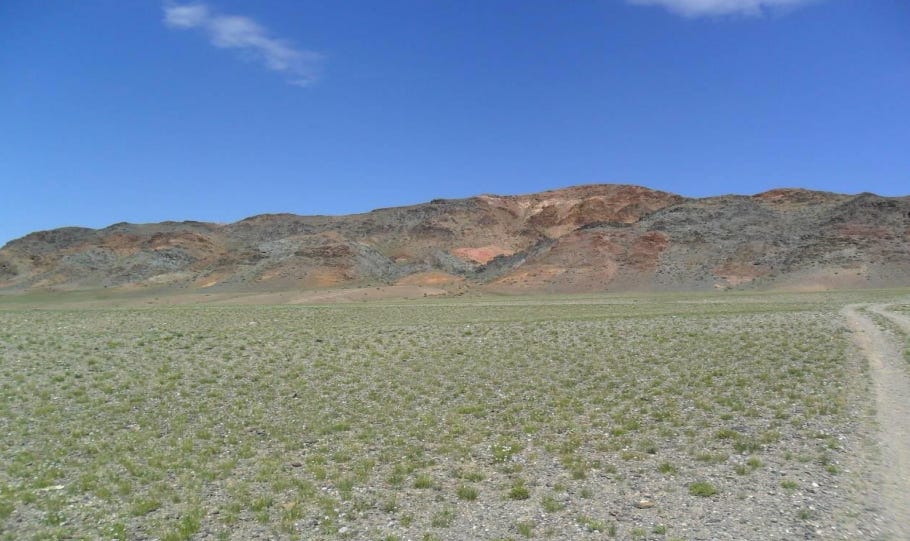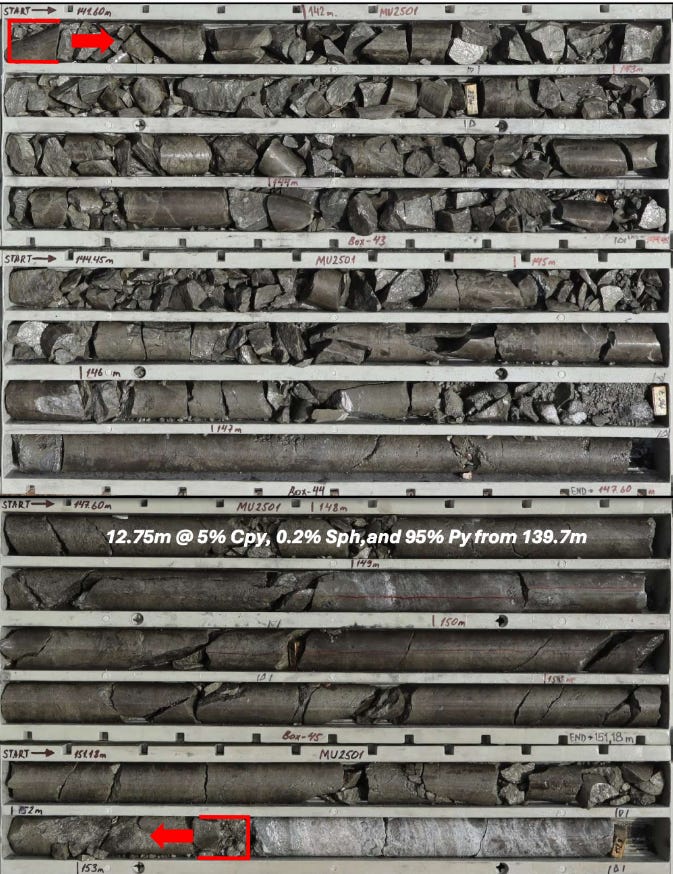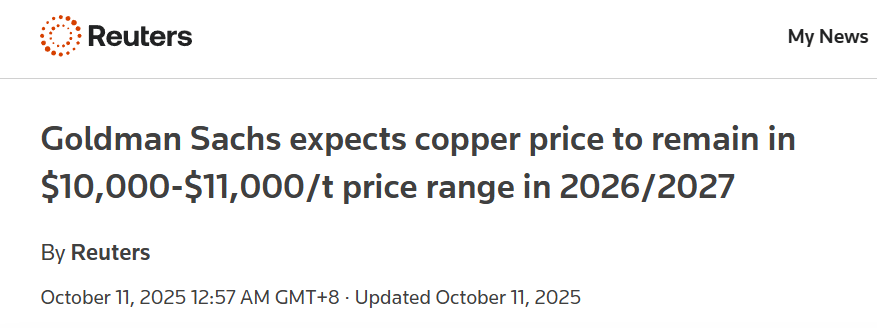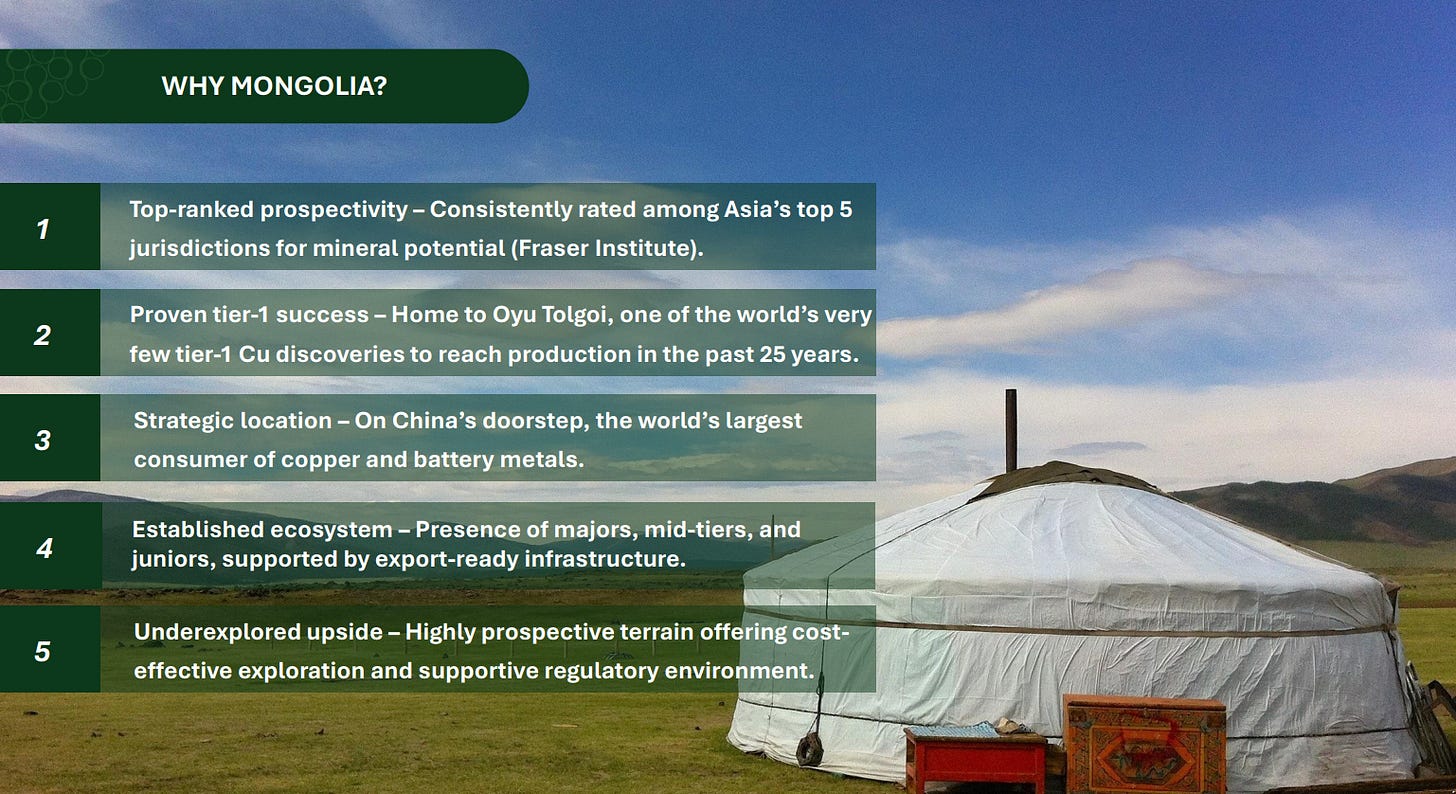AZ9 hits 20m of massive sulphides in Mongolia
Twenty metres of massive sulphide from AZ9’s latest hole, and it sits beyond the current resource
A major copper hit just outside the existing five-million-tonne resource.
Asian Battery Metals (ASX: AZ9) announced a standout result at its Maikhan Uul copper-gold project in Mongolia this morning, intersecting more than 20 metres of massive sulphide in a twinned hole.
The intercept sits beyond the existing resource boundary, meaning any grade here adds new tonnes, not just better ones. If assays confirm what the visuals suggest, AZ9 may have just extended its copper system in a big way.
The result comes at a great time as copper prices cracked US$11,000 a tonne last week, showing how much the market is rewarding real discoveries again.
At 4.6 cents a share and a market cap of around $20 million, AZ9 is putting together a line-up of high-grade copper hits across Mongolia that the market will struggle to ignore.
What makes this drill hole different
Today’s drill hole from the newly acquired Maikhan Uul, MU2501, was drilled to twin a historical hole from 2012 (MU_DH1204), which had already hinted at thick zones of mineralisation but lacked modern verification.
The reason a company like AZ9 would do this is to ensure that the old government data actually stacks up. The new hole intersected:
4.8m of massive sulphides from 132.5m
12.75m from 139.7m
2.59m from 154.1m
0.21m from 211.25m
In total, that’s 20.35m of visible massive sulphides. For the geologists among us, the minerals present included chalcopyrite, bornite, sphalerite, and pyrite - all characteristics of a system rich in copper and gold.
Early visuals suggest grades of roughly 1% copper, which, if confirmed, would put this comfortably in economic territory.
In layman’s terms, AZ9’s new hole hit the same kind of rocks the old data pointed to, only thicker and cleaner.
The drill hole sits outside the existing 5 Mt resource and appears to be running at roughly double the grade. AZ9 may have hit a new lens of high-grade mineralisation that wasn’t in any of the previous models.
Why the location matters
Maikhan Uul sits just eight kilometres from AZ9’s flagship Oval copper-nickel-PGE discovery.
Both projects sit within the same broader volcanic belt in south-western Mongolia, a region now showing signs that it could host multiple massive sulphide systems.
The twin hole at Maikhan Uul pulled thick sulphide intervals that resemble the hits already seen at Oval.
The two systems are distinct, and the comparable geology and short distance between them suggest AZ9 might be working along a mineralised corridor capable of supporting several deposits.
From a development perspective, this is an important step. The projects are close enough to share infrastructure, and any future mining operations could benefit from the scale and optionality that come with multiple discoveries in one district.
Interpreting the visuals in plain terms
For those unfamiliar with “massive sulphides”, it simply means the rock that was drilled is packed with metallic minerals such as chalcopyrite (copper), bornite, sphalerite (zinc) and pyrite.
These are the minerals that contain the valuable metals explorers dream of seeing when they split open a core.
When you see more than 20 metres of that kind of rock in a single drillhole, it’s a strong geological signal that the system feeding it is extensive and metal-rich.
At Maikhan Uul, AZ9 has hit thick, continuous zones of sulphide mineralisation typical of a volcanogenic massive sulphide (VMS) system, the same deposit type behind many of the world’s major copper mines.
Assays will put numbers to it soon, but the historical twin hole already returned copper grades up to 2.6% and meaningful gold.
If those grades are repeated or exceeded, the discovery would sit firmly in the economic range for a VMS deposit, where anything above 1% copper over substantial thicknesses can be commercially significant.
Next steps and what to watch
AZ9 has plenty spinning at once, with multiple programs across its Mongolian copper and nickel ground.
If you’re new to the story or just tracking along, here’s where things sit:
Maikhan Uul (Cu-Au): Assays from the 20 m massive sulphide hit are due within weeks, with follow-up drilling and EM work to test extensions.
Oval (Cu-Ni-PGE): First results are expected any day now, with more to follow. Multiple holes have already shown visible sulphides.
Copper Ridge (Cu-Au): Drilling continues to track structure and mineralisation along strike.
Bayan Sair (Cu-Au): Early copper exploration underway.
Metallurgy: Initial testwork nearing completion.
Due diligence: Review of the Maikhan Uul acquisition progressing through the six-month option period.
The team at AZ9 has a busy schedule, but it comes at a fortuitous time, with copper above US$11,000 a tonne and global supply struggling to keep up.
Gold is also at record highs with no end in sight, meaning any confirmation of high copper and gold grades at Maikhan Uul would give AZ9 genuine leverage to see the share price head north.
The broader picture
AZ9 has quietly been putting together the jigsaw puzzle in Mongolia, identifying a suite of copper, gold, nickel and PGE projects.
The Oval project has already shown world-best thick, high-grade sulphides, and Maikhan Uul now adds a second layer that could grow fast if assays confirm what the visuals suggest.
At just 4.6c, AZ9 doesn’t have success built into its current share price. But if the next few holes deliver, this could be a story that quickly grabs the market’s attention.
The Takeaway
We’ve been saying it for a while, but AZ9 is quietly shaping up as one of the more interesting copper stories on the ASX.
Thick massive sulphides at Maikhan Uul, strong hits already at Oval, and more targets waiting in the wings all point to something bigger forming in this part of Mongolia.
The signs are promising, the geology is lining up, the timing is right with the copper and gold price, and the company is as active as any junior explorer.
If assays confirm what the visuals are hinting at, AZ9 could quickly move from an early-stage explorer to a genuine copper name in Mongolia and on the world stage.



